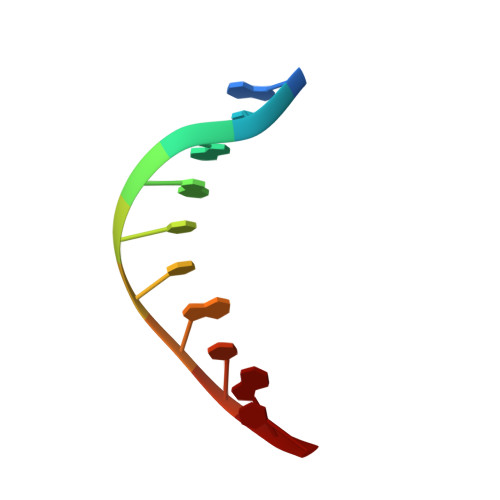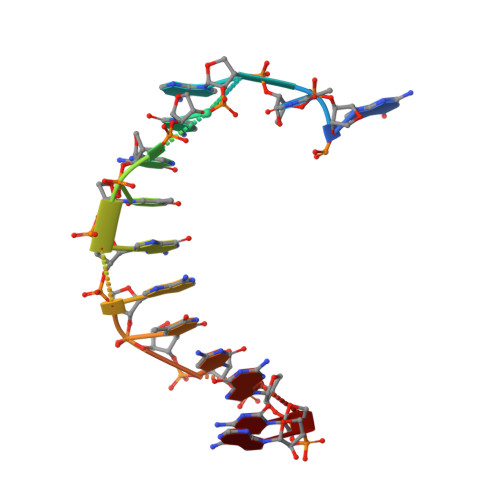Crystal structures of a natural DNA polymerase that functions as an XNA reverse transcriptase.
Jackson, L.N., Chim, N., Shi, C., Chaput, J.C.(2019) Nucleic Acids Res 47: 6973-6983
- PubMed: 31170294
- DOI: https://doi.org/10.1093/nar/gkz513
- Primary Citation of Related Structures:
6MU4, 6MU5 - PubMed Abstract:
Replicative DNA polymerases are highly efficient enzymes that maintain stringent geometric control over shape and orientation of the template and incoming nucleoside triphosphate. In a surprising twist to this paradigm, a naturally occurring bacterial DNA polymerase I member isolated from Geobacillus stearothermophilus (Bst) exhibits an innate ability to reverse transcribe RNA and other synthetic congeners (XNAs) into DNA. This observation raises the interesting question of how a replicative DNA polymerase is able to recognize templates of diverse chemical composition. Here, we present crystal structures of natural Bst DNA polymerase that capture the post-translocated product of DNA synthesis on templates composed entirely of 2'-deoxy-2'-fluoro-β-d-arabino nucleic acid (FANA) and α-l-threofuranosyl nucleic acid (TNA). Analysis of the enzyme active site reveals the importance of structural plasticity as a possible mechanism for XNA-dependent DNA synthesis and provides insights into the construction of variants with improved activity.
Organizational Affiliation:
Departments of Pharmaceutical Sciences, University of California, Irvine, CA 92697-3958, USA.

















